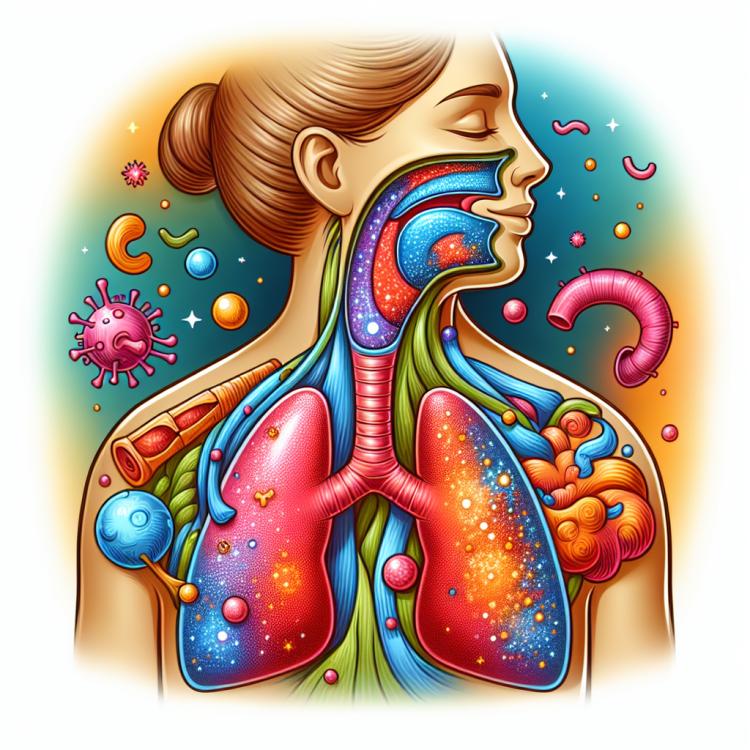
Tracheitis: symptoms, causes, and treatment
- Understanding tracheitis: key aspects
- Risk factors for the development of tracheitis
- Manifestations of tracheitis: what you should know
- Expert advice on treating tracheitis
- Modern methods of diagnosing tracheitis
- Treatment of tracheitis: modern approaches
- Effective measures for the prevention of tracheitis
- Interesting aspects of tracheitis
- FAQ
Understanding tracheitis: key aspects
Tracheitis is an inflammatory disease of the trachea, often accompanied by coughing and difficulty breathing. The main symptoms include irritation in the throat, pain while swallowing, and elevated body temperature. Manifestations can be either acute or chronic, requiring appropriate treatment aimed at alleviating breathing processes and reducing inflammation of the trachea’s mucous membrane. It is important to conduct a diagnosis and prescribe effective treatment to prevent complications and improve the patient’s condition.
Risk factors for the development of tracheitis
Tracheitis is usually caused by viruses or bacteria that infect the respiratory tract. Breathing polluted air, smoking, allergies, possible radiation, and a weakened immune system can be risk factors for developing tracheitis. Children, the elderly, and individuals with weakened health, as well as those who frequently come into contact with individuals suffering from respiratory infections, may be more susceptible to tracheitis.
- Infection with viruses and bacteria: Tracheitis is often caused by viruses and bacteria that attack the mucous membrane of the respiratory tract.
- Smoking: Tobacco smoke is one of the major risk factors for tracheitis, as it irritates the mucous membrane of the trachea and increases the likelihood of infection.
- Allergies: People suffering from allergic reactions may be more prone to tracheitis due to increased sensitivity of the mucous membranes of the larynx and trachea.
- Weakened immunity: Patients with a weakened immune system, whether due to illness or treatment, may more easily catch infections, including tracheitis.
- Age groups: Children, elderly individuals, and those with weakened health may be more susceptible to tracheitis due to a weaker protective function of the body.
Manifestations of tracheitis: what you should know
Tracheitis is characterized by various symptoms, including cough, which may be dry or with a small amount of sputum, difficulty breathing, pain or discomfort in the chest area, as well as an increase in body temperature. There is also a feeling of irritation and scratchiness in the throat, and sometimes a mucopurulent cough can be observed. If the symptoms become more intense or uncomfortable, it is important to see a doctor for diagnosis and appropriate treatment.
- Cough: Tracheitis is often accompanied by a cough, which can be dry or with a small amount of phlegm.
- Breathing problems: Difficulty breathing can be one of the symptoms of tracheitis, especially during physical exertion.
- Chest pain: Patients with tracheitis may experience pain or discomfort in the chest due to inflammation of the airways.
- Fever: A fever can be one of the signs of tracheitis, indicating the body’s fight against infection.
- Feeling of irritation in the throat: Patients may experience irritation and a scratchy throat caused by inflammation of the mucous membrane of the airways.
Expert advice on treating tracheitis
Experts recommend treating tracheitis with a special focus on eliminating the cause of the disease. Treatment may include taking antibiotics for bacterial infections, antiviral medications for viral origin, as well as the use of cough suppressants to relieve cough symptoms. It’s also important to ensure adequate rest, plenty of fluids, and humidified air to speed recovery and reduce the burden on the respiratory tract.

Modern methods of diagnosing tracheitis
The diagnosis of tracheitis usually includes a physical examination by a doctor, patient history, and additional studies such as blood and sputum laboratory tests. Educational diagnostic methods, such as chest X-rays or computed tomography, can help determine the extent of inflammation and the presence of complications in the airways. For accurate diagnosis of tracheitis, bacteriological cultures of sputum and other research methods that identify the causative agents of the infection may also be applied.
- Physical examination by a doctor, including listening to the lungs and chest to assess breath sounds.
- Blood test to identify inflammatory markers and possible infections.
- Sputum analysis to detect infection pathogens.
- Chest X-ray to assess the condition of the respiratory system and determine the degree of inflammation.
- Computed tomography, allowing for more detailed visualization of changes in the airways and detection of possible complications.
Treatment of tracheitis: modern approaches
- Use of symptomatic medications: Prescribing drugs to alleviate cough, reduce inflammation, and improve breathing.
- Antibiotic therapy: Use of antibiotics for bacterial infection, following doctor’s recommendations, and completing the course of treatment.
- Antiinfective medications: Prescribing agents to reduce inflammation and combat infection in the respiratory tract.
- Mucolytics: Use of medications that promote the thinning and expulsion of mucus.
- Inhalations: Use of inhalations with medicinal preparations or saline solution to improve the condition of the respiratory tract.
Effective measures for the prevention of tracheitis
- Avoid contact with sick people: The transmission of tracheitis occurs most often through airborne droplets, so it is important to avoid close contact with people who have respiratory infections.
- Maintain immunity: Regular consumption of vitamins, healthy eating, physical activity, and adequate rest contribute to maintaining a strong immune system and help the body cope with potential infections.
- Follow respiratory hygiene: Regular ventilation of rooms, wet cleaning, air humidification, and proper functioning of the ventilation system help cleanse the air of harmful microorganisms and reduce the risk of tracheitis.
- Avoid passive smoking: Tobacco smoke irritates the mucous membrane of the respiratory tract, increasing the likelihood of inflammatory diseases, including tracheitis.
- Preventive vaccinations: Vaccination against influenza and other respiratory infections can help prevent illness and the development of tracheitis, especially among at-risk groups.